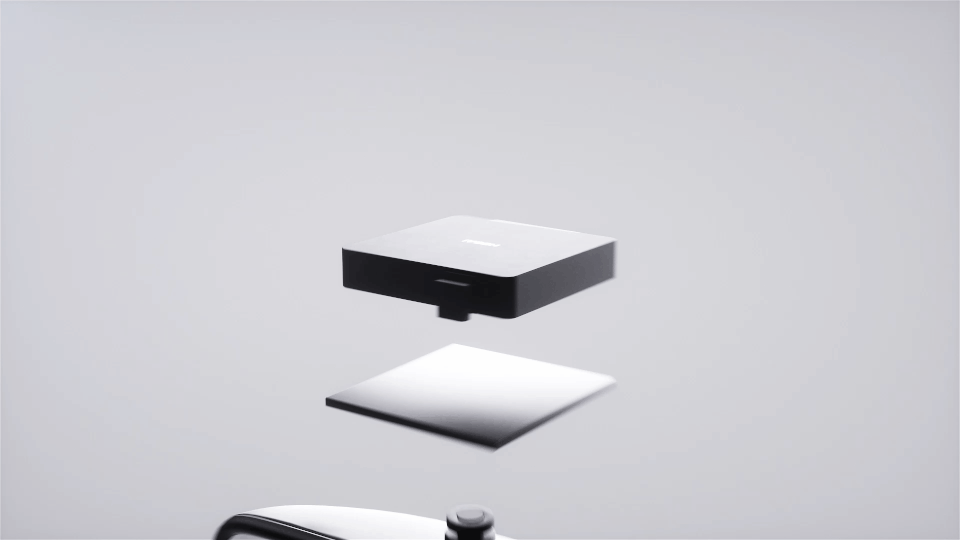
All sensory experiences of the driver and passengers in a vehicle fall under the scope of “NVH”, which stands for Noise, Vibration, and Harshness. For automobiles, NVH is a crucial indicator of quality that directly impacts the user’s driving experience. This is why high-end and luxury vehicles often have stricter requirements for NVH levels, as they strive for a quieter and more comfortable driving environment. (1)

ET25 is placed behind the windshield, enabling a sleek vehicle design that covers practical functionality without affecting aerodynamics. However, it is inevitable for lidar to produce noise during operations. This effect is particularly noticeable in electric vehicles, where even a slight “squeaking” sound can become very noticeable. Therefore, the NVH requirements for in-cabin lidar solution are also higher.
ET25 has a noise level of less than 25 dB(A) during operation, where the driver can hardly perceive it. So, how does ET25 do it?

Vibration and noise are closely related. First, imagine the scenario of plucking guitar strings to produce sound. The transmission of vibration is just like playing guitar – the scanner interacts with connected parts to form resonance, and the resonance will be transmitted from the “sound box”.
To achieve a low noise level comparable to being in a quiet library, it is necessary to address both factors that generate vibration at their source and restrain the path of vibration.

Noise levels of different items (2)
To minimize the vibration of moving parts during operation, ET25 was designed to achieve extreme balance with its internal components, distributing its mass evenly. A washing machine at a high rotating speed will tremble and produce noise if the clothes inside are unevenly distributed. Similarly, by adjusting the internal architecture, dimensions, shapes, and other design elements, the scanner’s center of gravity is positioned as close to the axis of rotation as possible. This helps minimize deviation errors, effectively suppressing imbalanced vibration and resonance. As a result, both noise and vibration levels are significantly reduced for the lidar.
In addition, the interactions between internal lidar components, and the interactions between the lidar casing and the vehicle body, can contribute to the formation of resonance, resulting in an adverse NVH experience. ET25 has undergone modal analysis and simulation tests, taking various elements into account, including the connection conditions with the vehicle body, and the effects of internal non-mechanical components. This comprehensive approach ensures the lidar casing is seamlessly integrated with the vehicle, cleverly suppressing the path of vibration and noise.

Speaking of ET25, the customized windshield also plays a significant role. The special front windshield features a double-layer structure, and the polymer PVB material that has an excellent sound-absorbing effect is used between the two layers, which effectively filters low and medium frequency noise. This way, the noise outside the vehicle is also perfectly isolated, providing an immersive and quiet driving experience.
However, engineers often call NVH the “automotive mystery” since the evaluation of this index is highly subjective. The passengers’ experience can be affected by their seating location, and even by noise in a certain frequency range. Different automakers may establish different standards based on their specific circumstances. Hesai has adopted a dual criteria approach that includes a 1/3-octave band and overall sound pressure level evaluations to ensure the noise in each frequency range remains at a low decibel level. This provides ET25 with “double assurance” when it comes to low-noise in-cabin performance.

The image is a representation of the testing environment and does not depict the actual testing of ET25
(Image Source: dxomark)
NVH possesses complex mechanisms that are closely related to driving comfort, and ET25 has made the combination of ultra-thin, ultra-quiet, and high performance possible. Hesai will further utilize lidar’s potential, and create an even more comfortable riding experience.
Notes:
(1) According to the reference of a certain luxury brand’s electric passenger vehicle, the noise standard inside the cabin during operation should be below 40-50 dB(A).
(2) Every increase of 10 dB(A) (decibels) is equal to a 10-fold increase in sound intensity, an increase of 20 dB(A) is a 100-fold increase in sound intensity, 30 dB(A) is an increase of 1000 times, and so on; the values are derived from internal test results, pictures are for reference only.



